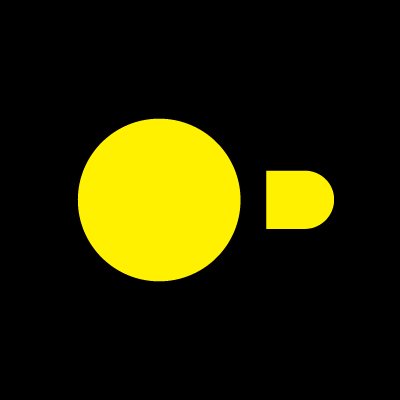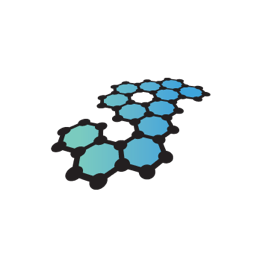DuckDB vs Graphite
A detailed comparison
Compare DuckDB and Graphite for time series and OLAP workloads
Learn About Time Series DatabasesChoosing the right database is a critical choice when building any software application. All databases have different strengths and weaknesses when it comes to performance, so deciding which database has the most benefits and the most minor downsides for your specific use case and data model is an important decision. Below you will find an overview of the key concepts, architecture, features, use cases, and pricing models of DuckDB and Graphite so you can quickly see how they compare against each other.
The primary purpose of this article is to compare how DuckDB and Graphite perform for workloads involving time series data, not for all possible use cases. Time series data typically presents a unique challenge in terms of database performance. This is due to the high volume of data being written and the query patterns to access that data. This article doesn’t intend to make the case for which database is better; it simply provides an overview of each database so you can make an informed decision.
DuckDB vs Graphite Breakdown
 |
 |
|
| Database Model | Columnar database |
Time series database |
| Architecture | DuckDB is intended for use as an embedded database and is primariliy focused on single node performance. |
Graphite can be deployed on-premises or in the cloud, and it supports horizontal scaling by partitioning data across multiple backend nodes. |
| License | MIT |
Apache 2.0 |
| Use Cases | Embedded analytics, Data Science, Data processing, ETL pipelines |
Monitoring, observability, IoT, real-time analytics, DevOps, application performance monitoring |
| Scalability | Embedded and single-node focused, with limited support for parallelism |
Horizontally scalable, supports clustering and replication for high availability and performance |
DuckDB Overview
DuckDB is an in-process SQL OLAP (Online Analytical Processing) database management system. It is designed to be simple, fast, and feature-rich. DuckDB can be used for processing and analyzing tabular datasets, such as CSV or Parquet files. It provides a rich SQL dialect with support for transactions, persistence, extensive SQL queries, and direct querying of Parquet and CSV files. DuckDB is built with a vectorized engine that is optimized for analytics and supports parallel query processing. It is designed to be easy to install and use, with no external dependencies and support for multiple programming languages.
Graphite Overview
Graphite is an open-source monitoring and graphing tool created in 2006 by Orbitz and open sourced in 2008. Graphite is designed for storing time series data and is widely used for collecting, storing, and visualizing metrics from various sources, such as application performance, system monitoring, and business analytics.
DuckDB for Time Series Data
DuckDB can be used effectively with time series data. It supports processing and analyzing tabular datasets, which can include time series data stored in CSV or Parquet files. With its optimized analytics engine and support for complex SQL queries, DuckDB can perform aggregations, joins, and other time series analysis operations efficiently. However, it’s important to note that DuckDB is not specifically designed for time series data management and may not have specialized features tailored for time series analysis like some dedicated time series databases.
Graphite for Time Series Data
Graphite is specifically designed and optimized for time series data. It uses the Whisper database format, which efficiently stores and manages time series data by automatically aggregating and expiring data based on user-defined retention policies. Graphite supports a wide range of functions for querying, transforming, and aggregating time series data, enabling users to create custom graphs and dashboards. However, as Graphite focuses exclusively on time series data, it may not be suitable for other types of data or use cases that require more advanced data modeling or querying capabilities.
DuckDB Key Concepts
- In-process: DuckDB operates in-process, meaning it runs within the same process as the application using it, without the need for a separate server.
- OLAP: DuckDB is an OLAP database, which means it is optimized for analytical query processing.
- Vectorized engine: DuckDB utilizes a vectorized engine that operates on batches of data, improving query performance.
- Transactions: DuckDB supports transactional operations, ensuring the atomicity, consistency, isolation, and durability (ACID) properties of data operations.
- SQL dialect: DuckDB provides a rich SQL dialect with advanced features such as arbitrary and nested correlated subqueries, window functions, collations, and support for complex types like arrays and structs
Graphite Key Concepts
- Metric: A metric in Graphite represents a time series data point, consisting of a path (name), timestamp, and value.
- Series: A series is a collection of metrics that are all related to the same thing. For example, you might have a series for CPU usage, a series for memory usage, and a series for disk usage.
- Whisper: Whisper is a fixed-size, file-based time series database format used by Graphite. It automatically manages data retention and aggregation.
- Carbon: Carbon is the daemon responsible for receiving, caching, and storing metrics in Graphite. It listens for incoming metrics and writes them to Whisper files.
- Graphite-web: Graphite-web is the web application that provides a user interface for visualizing and querying the stored time series data.
DuckDB Architecture
DuckDB follows an in-process architecture, running within the same process as the application. It is a relational table-oriented database management system that supports SQL queries for producing analytical results. DuckDB is built using C++11 and is designed to have no external dependencies. It can be compiled as a single file, making it easy to install and integrate into applications.
Graphite Architecture
Graphite’s architecture consists of several components, including Carbon, Whisper, and Graphite-web. Carbon is responsible for receiving metrics from various sources, caching them in memory, and storing them in Whisper files. Whisper is a file-based time series database format that efficiently manages data retention and aggregation. Graphite-web is the web application that provides a user interface for querying and visualizing the stored time series data. Graphite can be deployed on a single server or distributed across multiple servers for improved performance and scalability.
Free Time-Series Database Guide
Get a comprehensive review of alternatives and critical requirements for selecting yours.
DuckDB Features
Transactions and Persistence
DuckDB supports transactional operations, ensuring data integrity and durability. It allows for persistent storage of data between sessions.
Extensive SQL Support
DuckDB provides a rich SQL dialect with support for advanced query features, including correlated subqueries, window functions, and complex data types.
Direct Parquet & CSV Querying
DuckDB allows direct querying of Parquet and CSV files, enabling efficient analysis of data stored in these formats.
Fast Analytical Queries
DuckDB is designed to run analytical queries efficiently, thanks to its vectorized engine and optimization for analytics workloads.
Parallel Query Processing
DuckDB can process queries in parallel, taking advantage of multi-core processors to improve query performance.
Graphite Features
Real-time monitoring and visualization
Graphite provides real-time monitoring and visualization capabilities, allowing users to track and analyze their time series data as it is collected.
Flexible querying and aggregation functions
Graphite supports a wide range of functions for querying, transforming, and aggregating time series data, enabling users to create custom graphs and dashboards tailored to their specific needs.
Data retention and aggregation
Graphite’s Whisper database format automatically manages data retention and aggregation, reducing storage requirements and improving query performance.
DuckDB Use Cases
Processing and Storing Tabular Datasets
DuckDB is well-suited for scenarios where you need to process and store tabular datasets, such as data imported from CSV or Parquet files. It provides efficient storage and retrieval mechanisms for working with structured data.
Interactive Data Analysis
DuckDB is ideal for interactive data analysis tasks, particularly when dealing with large tables. It enables you to perform complex operations like joining and aggregating multiple large tables efficiently, allowing for rapid exploration and extraction of insights from your data.
Large Result Set Transfer to Client
When you need to transfer large result sets from the database to the client application, DuckDB can be a suitable choice. Its optimized query processing and efficient data transfer mechanisms enable fast and seamless retrieval of large amounts of data.
Graphite Use Cases
Application performance monitoring
Graphite is widely used for monitoring the performance of applications and services, helping developers and operations teams track key metrics, such as response times, error rates, and resource utilization. By visualizing these metrics in real-time, users can identify performance bottlenecks, detect issues, and optimize their applications for better performance and reliability.
Infrastructure and system monitoring
Graphite is also popular for monitoring the health and performance of servers, networks, and other infrastructure components. By collecting and analyzing metrics such as CPU usage, memory consumption, network latency, and disk I/O, IT administrators can ensure their infrastructure is running smoothly and proactively address potential issues before they impact system performance or availability.
Business analytics and metrics
In addition to technical monitoring, Graphite can be used for tracking and visualizing business-related metrics, such as user engagement, sales data, or marketing campaign performance. By visualizing and analyzing these metrics over time, business stakeholders can gain insights into trends, identify opportunities for growth, and make data-driven decisions to improve their operations.
DuckDB Pricing Model
DuckDB is a free and open-source database management system released under the permissive MIT License. It can be freely used, modified, and distributed without any licensing costs.
Graphite Pricing Model
Graphite is an open-source project, and as such, it is freely available for users to download, install, and use without any licensing fees. However, users are responsible for setting up and maintaining their own Graphite infrastructure, which may involve costs related to server hardware, storage, and operational expenses. There are also several commercial products and services that build on top of or integrate with Graphite, offering additional features, support, or managed hosting options at varying price points.
Get started with InfluxDB for free
InfluxDB Cloud is the fastest way to start storing and analyzing your time series data.